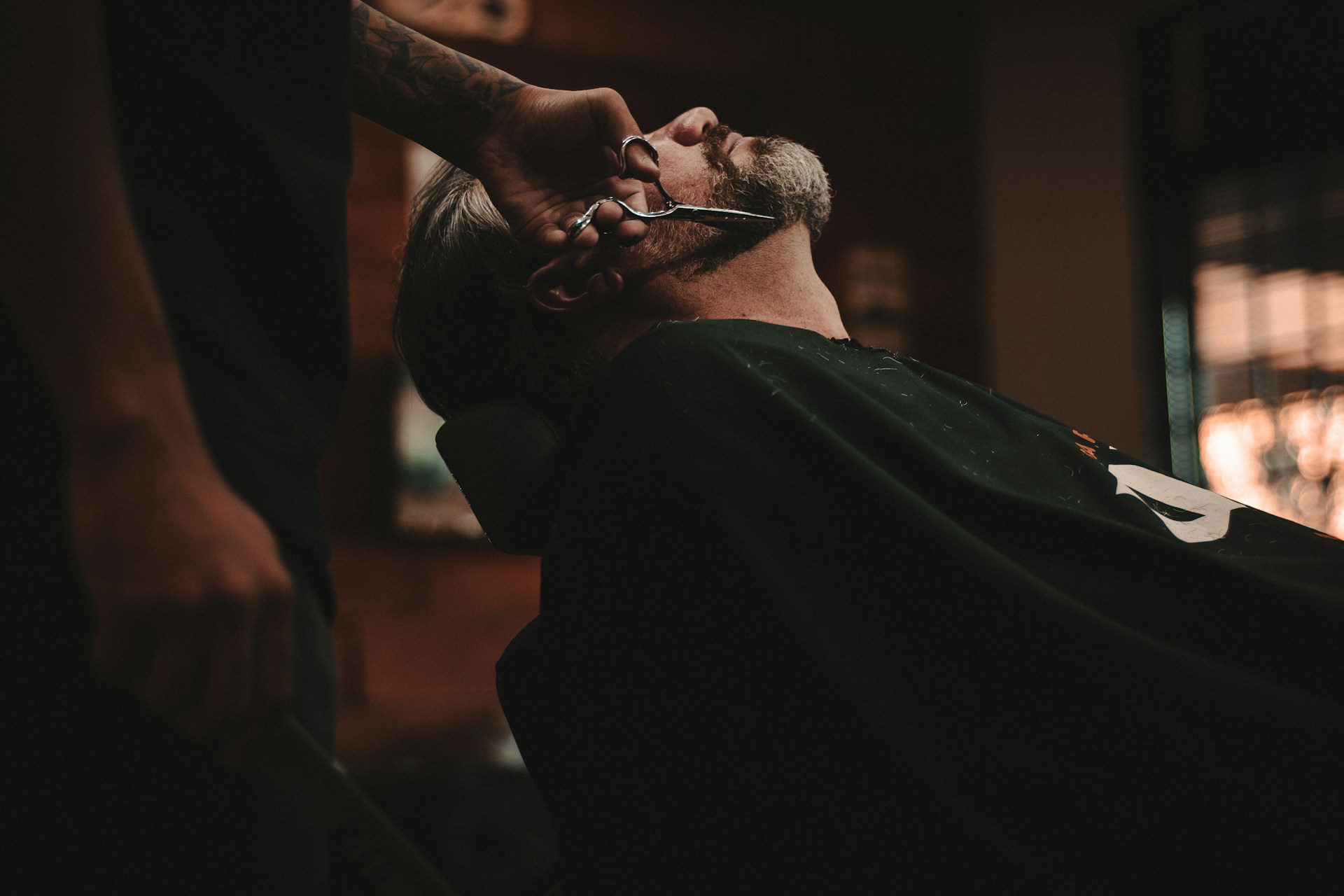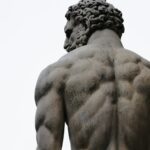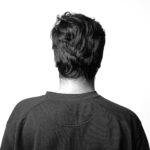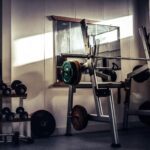Your face shape plays a big role in how flattering a haircut looks on you. The same style can look drastically different on two people based purely on their facial structure. It’s like tailoring your clothes—why wouldn’t you tailor your haircut too? Choosing the right haircut for your face shape not only enhances your natural features but also helps you look more balanced and put-together. Whether you’re contemplating a major chop or just want to change up your layers, understanding the science of shape and symmetry is the first step to your best look ever.
When it comes to face shapes, it’s not a one-style-fits-all situation. Some people can pull off bangs better than others, some look fabulous in long flowing locks, while others absolutely shine with pixie cuts. But here’s the thing: it’s not just about trends—it’s about you. Knowing your face shape helps you choose styles that naturally complement your bone structure, minimize the features you’re not as confident about, and highlight the ones you love.
Introduction to Face Shape and Hairstyle Harmony
Why Your Face Shape Matters in Choosing a Haircut
So, why does face shape matter? Imagine your face as the canvas and your hair as the frame. The frame should highlight and balance what’s within it. A haircut that suits your face shape can make your eyes pop, soften harsh angles, or even make your face look slimmer or fuller depending on what you want.
Think of celebs who always seem to have the perfect cut—it’s not just the glam team behind them. It’s that their haircuts are customized to enhance their natural shape. If you’ve ever had a bad haircut that didn’t “sit right,” chances are it wasn’t cut with your face shape in mind.
Hairstylists often use your facial proportions as a blueprint. Are your cheekbones prominent? Do you have a wider forehead? A longer chin? These factors dictate whether bangs, layers, blunt cuts, or side parts work for you.
It’s all about balance. A haircut can balance out a strong jawline or round cheeks. It can elongate a shorter face or soften sharper angles. Understanding this balance will help you make informed decisions about your next haircut instead of relying solely on Pinterest boards.
The Science Behind Facial Geometry and Aesthetics
There’s actually a bit of geometry behind all of this. Your face can typically be categorized into one of six primary shapes, and each one has its own lines, angles, and proportions. Artists and designers have long used the “golden ratio” to determine beauty—and that same principle applies here.
For example, oval faces have a natural balance of width and length, making them the “ideal” shape by classical standards. Square faces have bold jawlines that demand different styling tactics than a heart-shaped face with a narrow chin.
When we talk about aesthetics, it’s not just subjective opinion. We’re wired to find certain proportions more pleasing. A hairstyle that aligns with those proportions enhances harmony and symmetry—something we often perceive as beautiful or attractive.
So, in a way, choosing the right haircut is part science, part art—and all about expressing your best self.
Identifying Your Face Shape
How to Measure Your Face at Home
Before you start scrolling through haircut inspo, you need to figure out your face shape. It’s super easy and you can do it at home with just a mirror and a flexible measuring tape—or even a string and ruler.
Here’s what you need to measure:
- Forehead Width – Measure across your forehead at its widest point.
- Cheekbone Width – Measure across the upper cheeks, from the edge of one cheekbone to the other.
- Jawline – Measure from the tip of your chin to just below your ear at the jaw angle. Multiply that number by two.
- Face Length – Measure from the center of your hairline to the tip of your chin.
Once you have these numbers, compare them. The differences will help you identify which shape your face most closely resembles.
- If your face length > cheekbones > forehead > jawline, you likely have an oval shape.
- If your face length = width, it’s probably round.
- If your jawline is the strongest feature, you may have a square shape.
- If your forehead is the widest and chin tapers down, you likely have a heart shape.
- If your cheekbones are wide and forehead/chin are narrow, it’s likely a diamond.
- If your face is noticeably longer than wide, you’re in the oblong category.
Pro tip: Take a selfie while your hair is pulled back. Use a whiteboard marker to trace the outline of your face on the mirror. This visual aid can make it easier to pinpoint your shape.
The Six Primary Face Shapes Explained
Oval
Balanced proportions and slightly narrower jawlines define this shape. Most styles suit it.
Round
Soft angles and equal width and length. Best paired with layered and angular styles.
Square
Strong jawlines and broad foreheads. Soften the look with waves or layered bobs.
Heart
Wide forehead and a narrow chin. Side-swept bangs and layers below the cheekbones work wonders.
Diamond
Defined cheekbones, narrow forehead and jaw. Volume around the chin adds harmony.
Oblong
Elongated face with minimal width. Shoulder-length cuts and bangs create balance.
Best Haircuts for Oval Faces
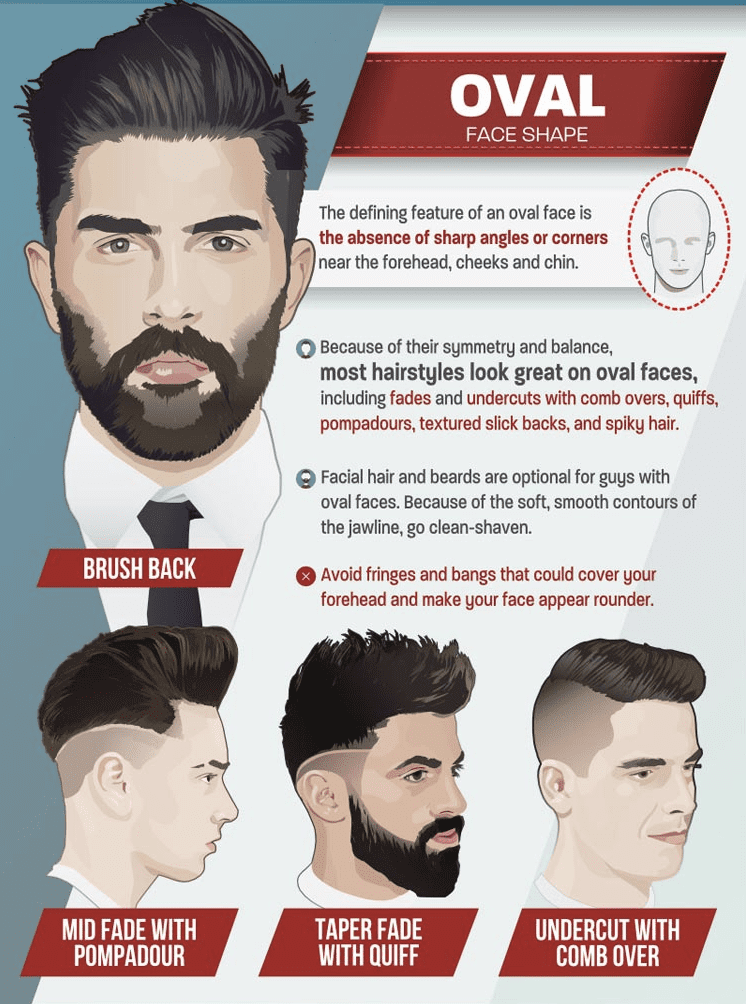
Why Oval Faces Are the Most Versatile
Oval faces are often referred to as the “universal” face shape. If you’ve got one—lucky you! Your balanced proportions mean you can pull off almost any haircut with ease. The symmetry of your facial structure allows you to play with lengths, layers, bangs, and textures.
You can try:
- Blunt bobs
- Long layers
- Shaggy cuts
- Curtain bangs
- Pixie cuts
Your cheekbones are the star here, so don’t hide them. Styles that keep the hair away from your face or tuck behind the ears will draw attention to your natural bone structure.
Pixie cuts can emphasize your eyes and cheekbones. Long waves give a romantic, feminine touch. And the trendy lob (long bob)? Total win. You can even experiment with edgy undercuts or asymmetrical styles because your balanced face gives you that freedom.
Styles to Try and Styles to Avoid
Try:
- Middle parts for a sleek, modern look.
- Layers starting below the cheekbones.
- Subtle waves for added volume.
Avoid:
- Too much volume at the crown—it can make your face look longer.
- Extremely long hair with no layers—it can drag your face down.
- Super tight curls without layers—they might overwhelm your shape.
Best Haircuts for Round Faces
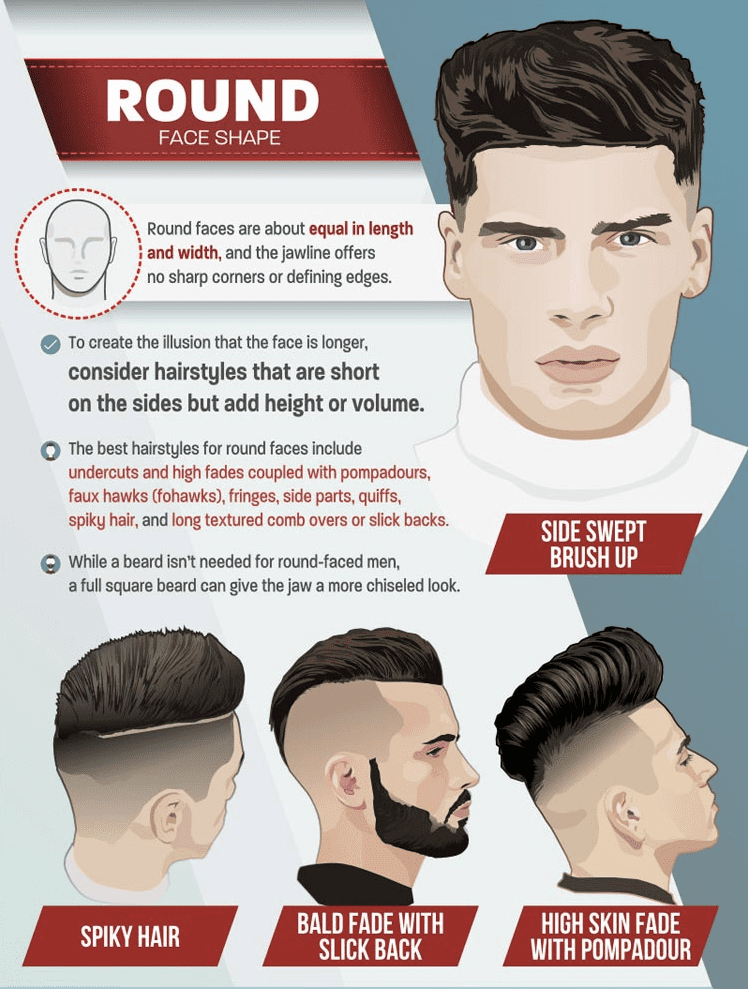
Creating Definition with Layers and Angles
Round faces tend to have soft features, with the width and length being almost equal. The goal here is to create an illusion of length and definition. Think vertical lines, layers, and height.
Your go-to haircuts:
- Long layers with volume on top
- Side-swept bangs
- Asymmetrical bobs
- Long pixie cuts
These styles help elongate your face and add structure. A deep side part can break up the roundness, while choppy ends bring in some edge. Layers starting below the chin are perfect for slimming your face.
Want to go shorter? Try an asymmetrical bob where one side is slightly longer. It adds that needed angle and gives the illusion of a more oval-like structure.
Best Haircuts for Square Faces
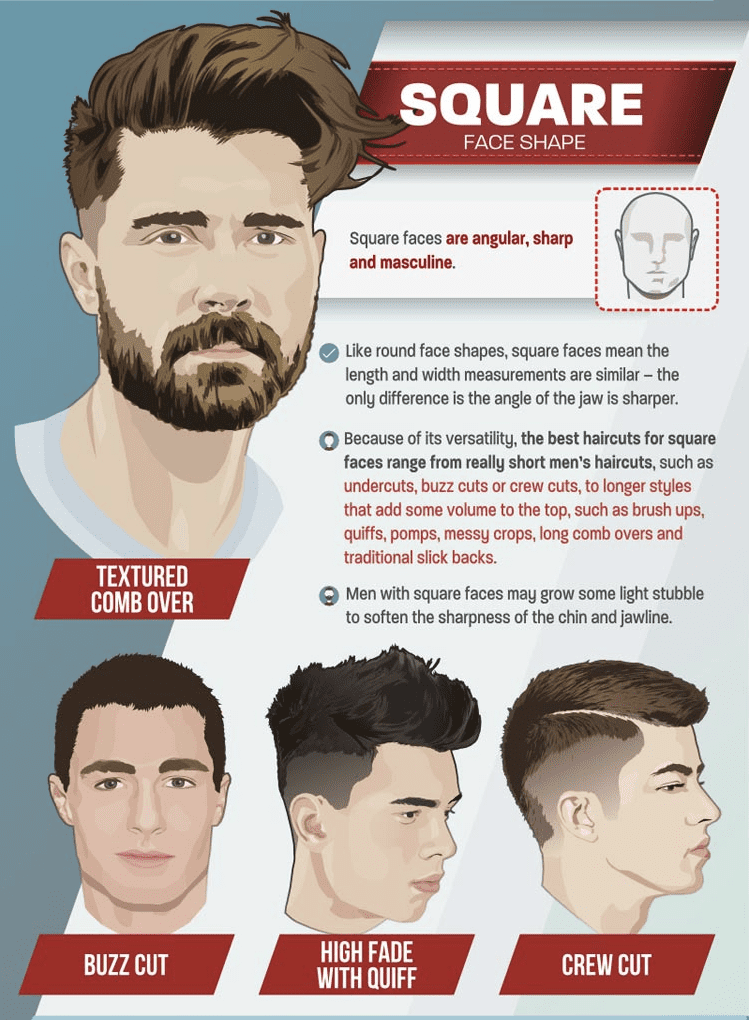
Soften the Jawline with Texture and Volume
Square faces are defined by a broad forehead, wide cheekbones, and a strong jawline. The width of your forehead, cheeks, and jaw is almost the same, which gives you that chiseled, boxy structure. While that strong jaw is a striking feature, the goal with haircuts for square faces is to soften those edges and bring a little more fluidity into your overall look.
So, what works best? Soft, layered styles that create movement and reduce angularity are your best friends. Think about side-swept bangs, long waves, and curtain bangs that frame the sides of your face. Layers starting at the jawline or below help distract from the angularity and make the features appear less harsh.
Curly or wavy hair naturally does a great job at breaking up sharp lines, so if you’ve got texture, don’t fight it—embrace it! If you’ve got straight hair, ask your stylist for layers and possibly a soft wave styling to give your cut more life.
If you’re in the mood for short hair, a layered bob with a side part is a stunning option. Make sure the bob isn’t cut right at the jawline—that can actually emphasize it more. Instead, go slightly below or above for a more flattering look.
Haircuts That Add Balance and Movement
Some amazing haircut options for square faces include:
- Layered shoulder-length cuts with side parts
- Textured lobs (long bobs)
- Long waves with middle or side parting
- Angled bobs with longer front pieces
- Long hair with feathered layers
Avoid blunt cuts and heavy, straight-across bangs, as they tend to make the face appear boxier. You want to create curves and flow, not more straight lines. Similarly, avoid jaw-length styles without texture—they’ll highlight the squareness of your jaw even more.
Add volume at the crown or near the top of your head to draw the eye upward and create balance. And don’t forget about hair accessories—clips or parting tricks can also shift attention away from a dominant jawline.
Best Haircuts for Triangle-Shaped Faces
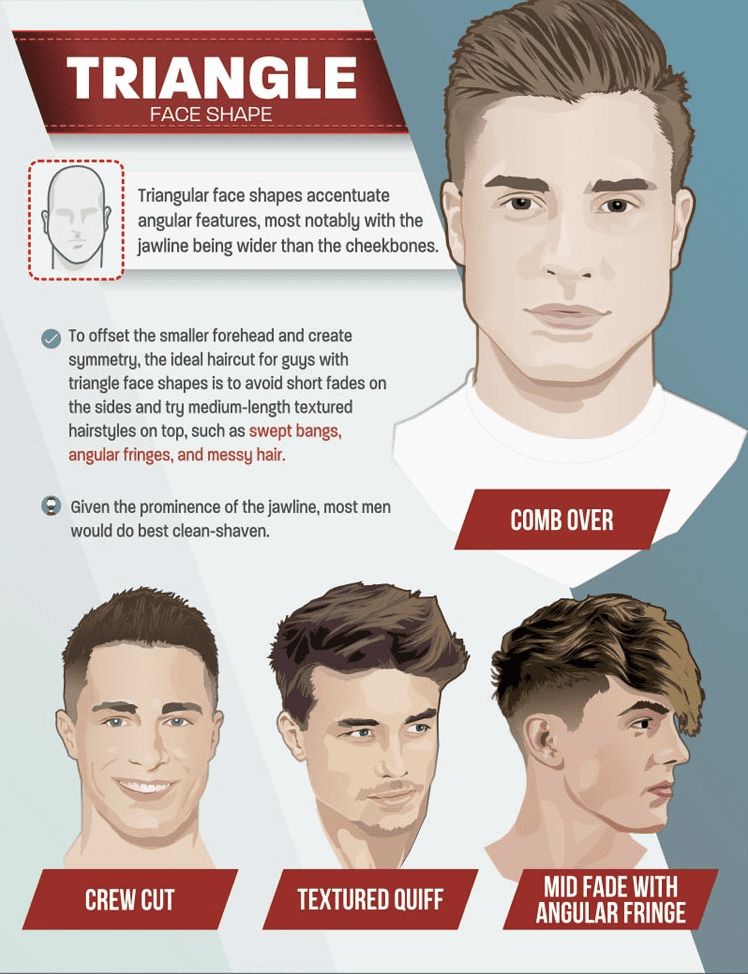
Drawing Attention Away from the Forehead
Triangle-shaped faces have a very distinct look. They’re widest at the forehead and gradually narrow down to a pointy chin. Think of a classic triangle shape—hence the name. If this is your shape, the key is to balance out the broader upper half of your face and soften that narrow chin.
What you’re looking for are styles that draw the eye downward and add width to the lower part of the face. Bangs are particularly helpful in reducing the appearance of a wide forehead. Side-swept bangs, curtain bangs, or soft wispy fringe work wonders here. They not only balance the width but also add a romantic softness.
Length is also your ally. Shoulder-length styles and longer cuts that curl or wave at the ends help bring volume to the jawline area. You could also try layered cuts that begin just below the cheeks or jawline to create fullness at the bottom.
Avoid pulling all your hair back into tight ponytails or buns without any pieces left out—this only emphasizes the wide forehead and narrow chin. If you love updos, opt for soft styles that leave some strands loose around the face.
Enhancing the Lower Half of the Face
The best haircut ideas for triangle-shaped faces include:
- Long side-swept bangs
- Chin-length bobs with side part
- Soft layers that start below the chin
- Loose curls or waves that frame the face
- Textured shoulder-length cuts
Haircuts that add volume to the jawline help balance the narrowness at the bottom of the face. A-line bobs—where the front is longer than the back—are also fantastic for this shape. They accentuate the jaw and draw attention downward, creating harmony between the forehead and chin.
Avoid styles with too much volume at the crown or ultra-short pixie cuts that leave your forehead completely exposed. These can exaggerate the heart shape and make the forehead appear even wider.
Best Haircuts for Diamond-Shaped Faces
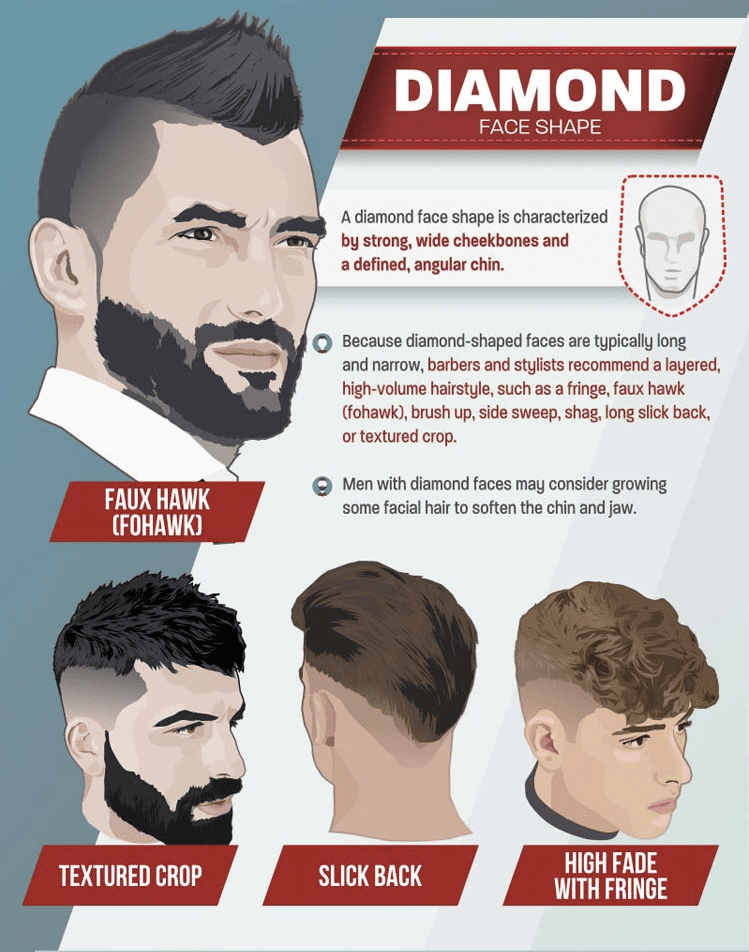
Highlighting Cheekbones with the Right Cut
Diamond-shaped faces are uniquely angular, with wide cheekbones, narrow foreheads, and narrow chins. Think of a diamond with the widest point in the middle—that’s exactly what this shape looks like. The cheekbones are your standout feature, and your haircut should be designed to emphasize them, not compete with them.
To make the most of your diamond-shaped face, aim for styles that soften the angles and draw attention to your eyes and cheekbones. Chin-length bobs, side parts, and layered styles are ideal. These haircuts add width to the forehead and chin areas, balancing the strong middle section.
If you’re a fan of bangs, side-swept bangs are an excellent choice. They soften the forehead and guide the eye toward the cheekbones. Avoid blunt bangs—they can make the upper face appear even narrower.
Pixie cuts with volume at the crown are also a go-to for diamond faces. These cuts bring width to the top of the head and create a stylish silhouette.
Adding Softness to Angular Features
Recommended cuts include:
- Chin-length bobs with side-swept bangs
- Shoulder-length cuts with textured ends
- Long layers that start below the cheekbones
- Deep side parts for asymmetry
- Voluminous pixie cuts with side fringe
Avoid overly angular or geometric cuts that sharpen your already prominent features. And be cautious with styles that tuck hair tightly behind the ears—it can make your cheekbones seem overly wide and your forehead too narrow.
Instead, try styles that offer width at the top or bottom, creating a visual balance. Soft curls, waves, or feathered ends help to round out the edges and give your face a more balanced appearance. With the right haircut, your high cheekbones can become your greatest asset.
Best Haircuts for Oblong Faces
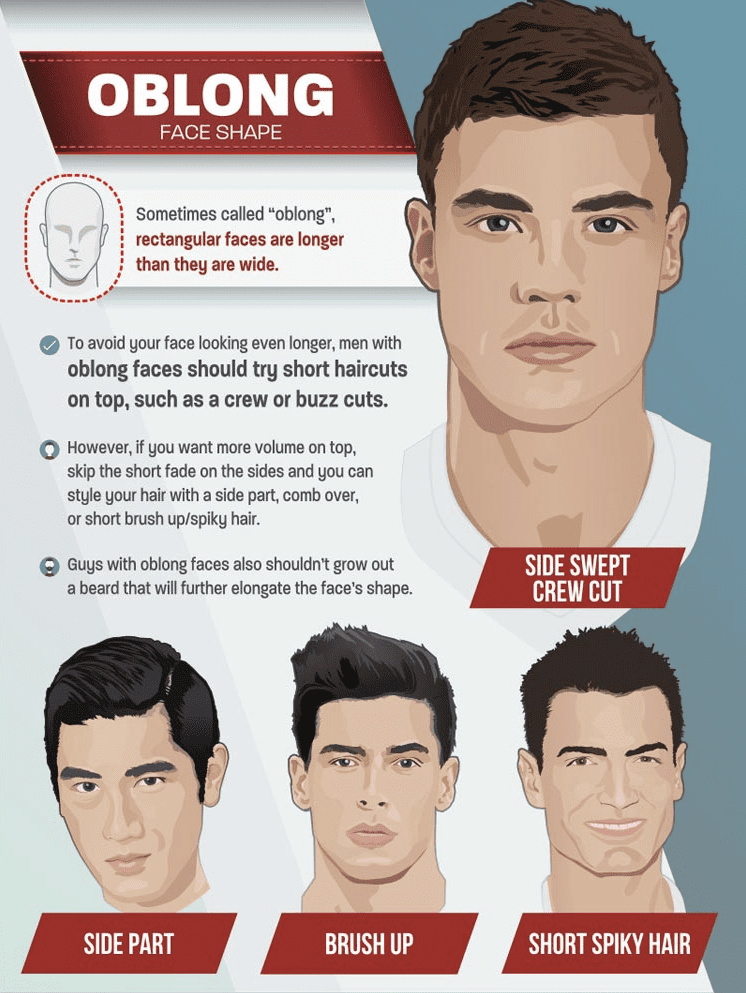
Creating Illusion of Width
Oblong faces are long and narrow. If this is your shape, your goal with any haircut should be to reduce the perception of length and add width and volume. Think horizontal lines over vertical ones.
Bangs can be your best friend—especially full, blunt, or curtain bangs. They visually “cut” the length of your face and add horizontal interest. Shoulder-length hair is often the sweet spot for oblong faces because it doesn’t elongate the face the way super long hair does.
Add waves or curls at the sides to widen the face and create a balanced shape. You should also try cuts with plenty of layers and avoid pin-straight or ultra-long styles that drag your face down even more.
A layered bob, voluminous lob, or shag haircut are all fantastic choices for this face shape. They create movement and lift, bringing life to your look while breaking up the face length.
Avoiding Length That Elongates Further
Top picks for oblong faces include:
- Curtain bangs with shoulder-length cuts
- Layered shags with volume at the sides
- Medium bobs with subtle waves
- Rounded cuts with curls or body
- Side parts for visual width
Avoid:
- Ultra long hair with no layers
- Slicked-back hairstyles
- Center parts without volume at the sides
When styling your hair, focus on volume at the temples or the sides, not the top. And always keep in mind that soft texture and side movement are your allies—they break the vertical line of your face and give it more dimension.
Haircut Tips Based on Hair Texture and Thickness
Matching Texture with Face Shape
Your hair’s texture is just as important as your face shape when choosing a haircut. You could have the perfect cut for your oval or square face, but if your hair’s natural texture doesn’t cooperate with it, the style may fall flat—literally.
For example, if you’ve got fine, straight hair, you’ll want to add layers and volume to avoid your haircut looking limp or one-dimensional. Styles like layered bobs, soft waves, and curtain bangs help give fine hair movement without weighing it down.
Thick hair, on the other hand, can carry more dramatic shapes—like blunt cuts or deep layers—that help reduce bulk and prevent that dreaded triangle shape (flat at the roots and poofy at the ends). If you’ve got thick, wavy hair and a round face, long layers with a side part can create a flattering shape without overemphasizing the width.
Fine, Thick, Curly, or Straight—What Works Best
Here’s a quick guide based on common hair textures:
Fine Hair
- Best Cuts: Layered pixie, lob with curtain bangs, blunt bob
- Avoid: Too many layers—they can make hair look thinner
Thick Hair
- Best Cuts: Long layers, shags, structured bobs
- Avoid: Heavy, blunt ends without layering—they add unnecessary volume
Curly Hair
- Best Cuts: Deva cuts, layered shags, curly bobs
- Avoid: Straight-across cuts—they create pyramid shapes
Straight Hair
- Best Cuts: Blunt bob, layered lob, side-parted pixie
- Avoid: Long, flat styles with no dimension
When in doubt, ask your stylist to tailor your haircut not just to your face shape but also your hair’s behavior. Hair texture can make or break the visual impact of a cut.
Gender-Neutral Haircuts That Flatter Any Face Shape
Trendy Cuts for Everyone
In today’s style landscape, gender-neutral haircuts are more popular than ever. And the best part? Many of these haircuts flatter multiple face shapes with just a few tweaks.
Think about cuts like the modern shag, the undercut, or the long pixie—these aren’t confined to any gender and can be customized to enhance cheekbones, slim jawlines, or soften angular features.
The key to pulling off a gender-neutral look is balance. Keep the lines clean, the layering intentional, and the texture natural. Add fringe if you want to soften the forehead or opt for volume at the crown to elongate rounder faces. These styles let your facial structure shine while offering a sleek, edgy aesthetic.
How to Customize Them for Your Features
Here are some universally flattering, gender-neutral cuts and how they can be customized:
- The Long Pixie: Works on oval, heart, and square faces. Add a side-swept fringe for round faces.
- Textured Bob: Suitable for all shapes, especially when chin-length or slightly longer.
- Undercut: Adds structure to round faces and definition to softer jawlines.
- Modern Shag: Layers and texture help diamond and oblong faces gain width.
- Blunt Fringe with Medium Length: Great for elongating shorter face shapes and highlighting the eyes.
Make sure your stylist tailors the cut to your natural parting, growth pattern, and facial proportions. And don’t be afraid to express your personality—these styles are all about confidence and authenticity.
Hair Color and Style Pairings by Face Shape
How Color Placement Enhances Your Look
Believe it or not, your hair color and where you place the color matter almost as much as the cut. Strategic highlights, lowlights, and root shadows can change the perceived shape of your face.
For example, a lighter tone around the jawline can make a heart-shaped face appear fuller at the bottom. Darker roots with brighter ends elongate a round face by drawing the eye downward. And bold face-framing highlights work wonders for oval and square faces, emphasizing symmetry and structure.
Balayage, ombré, and root melts are all popular techniques that can be used creatively to enhance your haircut and facial features. The goal is to use color to frame your best features, much like makeup.
Face-Framing Highlights and Lowlights
Here’s a color placement guide by face shape:
- Oval: Almost any highlight pattern works; try face-framing balayage.
- Round: Vertical highlights with darker sides to slim the face.
- Square: Soft highlights at the temples and jawline to soften angles.
- Heart: Light tones near the jawline to balance width.
- Diamond: Lowlights around the temples, highlights at the crown.
- Oblong: Lighter pieces at the sides to add width.
Pairing the right color with the right cut creates dimension, directs attention, and transforms a good haircut into a great one.
Common Haircut Mistakes to Avoid
Ignoring Your Natural Growth Pattern
This is a major one. Everyone’s hair grows differently—some have cowlicks at the crown, others have forward growth patterns around the hairline. Ignoring this when choosing a haircut is a recipe for daily styling struggles.
Always consider your hair’s natural fall when choosing a style. If your bangs won’t stay down without heavy product, maybe a side-swept style is better. If your hair flips outward when it reaches your shoulders, maybe a shorter bob will sit better.
Trends vs. Personal Suitability
Another big mistake? Chasing trends instead of finding what works for you. That shag haircut that’s all over Instagram might look amazing on someone with thick, curly hair and an oval face—but that doesn’t mean it will suit your fine, straight strands and square jawline.
Trends come and go. What matters most is how you feel in the haircut and whether it aligns with your face shape, hair texture, and personal lifestyle. A great haircut should feel like an extension of you, not a costume you can’t wait to grow out of.
Seasonal Haircut Recommendations
Adapting Styles for Weather and Mood
Haircuts aren’t just about shape and texture—they’re also about timing. The season you’re in should influence your haircut choices. Summer calls for lightweight, low-maintenance cuts that beat the heat. Winter? That’s when you might lean into longer styles for warmth and drama.
In the summer, shorter bobs, pixies, and layered lobs are ideal. They reduce heat retention and dry faster, saving you time and sweat. You can even go for shaved sides or undercuts if you’re feeling bold.
Come fall and winter, people tend to gravitate toward longer, fuller styles. Think soft waves, long layers, and curtain bangs. These cuts pair beautifully with scarves and cold-weather fashion, offering both style and comfort.
When to Refresh Your Look
A good rule of thumb is to refresh your haircut every 8–12 weeks. This keeps split ends at bay and maintains the integrity of your style. If you’re growing your hair out, trim less frequently, but still visit your stylist every 3–4 months for shape maintenance.
Switching up your haircut with the seasons is also a fun way to reset your look without drastic changes. A minor tweak—a few new layers, a fringe, or a shift in parting—can make a big impact and keep your look feeling fresh and current.
Celebrity Haircuts as Inspiration by Face Shape
Who to Follow for Your Face Type
When in doubt about what hairstyle to try next, looking at celebrities with a similar face shape can be incredibly helpful. These stars have professional stylists tailoring every cut to their features, and you can use their looks as inspiration for your own next salon trip.
Oval Face: Look to celebrities like Rihanna and Charlize Theron. They’ve rocked everything from buzz cuts to long waves, showing how versatile this face shape can be.
Round Face: Selena Gomez and Ginnifer Goodwin are great examples. From soft waves to pixie cuts, they know how to balance their fuller cheeks with stylish cuts.
Square Face: Angelina Jolie and Olivia Wilde often wear cuts that soften their strong jawlines—think long layers, gentle waves, or side parts.
Heart-Shaped Face: Reese Witherspoon and Kourtney Kardashian have both embraced styles that balance their wider foreheads and narrower chins, often incorporating curtain bangs or waves.
Diamond Face: Megan Fox and Vanessa Hudgens are perfect muses for this shape. They often use middle parts, volume at the crown, and loose curls to enhance their sharp cheekbones.
Oblong Face: Sarah Jessica Parker and Liv Tyler are masters at softening elongated facial features with waves, layers, and balanced lengths.
Style Icons Across the Shape Spectrum
Sometimes the best way to find your next haircut is by collecting images of people who look like you. Pinterest boards, Instagram hairstylists, and celebrity red carpet looks are goldmines for visualizing what could work.
Don’t just focus on one photo—look at how that style looks in different settings, with and without makeup, styled casually and formally. This gives you a full picture of how the haircut will live on your head day-to-day.
Use these icons not to copy but to inspire. Your face, texture, and lifestyle are unique. Let their style guide you, not define you.
Final Thoughts: Embrace Your Unique Shape
Confidence is the Ultimate Style
No matter your face shape, the most important element of any haircut is how it makes you feel. You can follow every rule, balance every angle, and still feel like something’s off—because confidence is the finishing touch every great style needs.
Haircuts are a powerful form of self-expression. They can make you feel empowered, sophisticated, edgy, or fresh. But chasing perfection based solely on geometry? That’s not the goal. The goal is harmony between your features and your inner personality.
Once you know your face shape and texture, use that knowledge as a base to experiment. Try styles you’ve always wanted but were unsure about. Hair grows back, and a good stylist can guide you safely through the transformation process.
Regular Maintenance for Long-Term Impact
A great haircut isn’t just a one-time win—it’s a commitment. Regular trims, deep conditioning, and minimal heat damage go a long way in keeping your style fresh and healthy. The right haircut paired with consistent care can become your signature look.
And if you’re feeling stuck or bored, remember: a small tweak—adding bangs, changing your part, or cutting a few inches—can reinvigorate your entire look.
FAQs
1. How can I figure out my face shape quickly without measuring?
You can slick your hair back and trace the outline of your face in a mirror with a washable marker. Compare the outline to common face shape charts online—it’s surprisingly accurate!
2. Should I always follow face shape rules when choosing a haircut?
Use face shape as a guideline, not a rulebook. It helps avoid obvious mismatches, but the best haircut is one that fits your lifestyle, personality, and preferences.
3. Can haircuts really make my face look slimmer or more balanced?
Absolutely. Haircuts with the right angles, layers, and volume can add symmetry, define cheekbones, and even give the illusion of a different face shape.
4. Do bangs suit every face shape?
Most face shapes can wear bangs—it just depends on the type. Round faces benefit from side-swept bangs, while oval faces can pull off blunt fringe. The key is personalization.
5. How often should I change my haircut?
If you’re happy, stick with what works. But it’s healthy to change things up every year or so, even subtly. It keeps your look modern and reflects personal growth.


